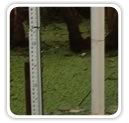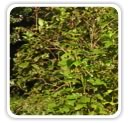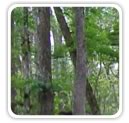Bayou Chevreuil Mitigation Area, LA
| Quick Facts |
| Location |
St. James and LaFourche Parishes, Louisiana |
| USACE District |
New Orleans |
| Site Acres |
2,712 or as needed |
| Watersheds Serviced (HUC Cataloging Units) |
Barataria Basin--East and West Central Louisiana Coastal Cataloging Units (HUC Units 08090301 and 08090302) |
| EPA EcoRegions Serviced |
Mississippi Alluvial Plain |
| Parishes or Portions of Parishes Serviced |
Ascension, Assumption, Iberia, Iberville, Jefferson, Lafourche, Plaquemines, St. Charles, St. James, St. John the Baptist, St. Mary, St. Martin, and Terrebonne |
| Available Wetland Habitat Types |
Cypress-Tupelo, Bottomland Hardwood |
| Available Mitigation Types |
Enhancement, Rehabilitation |
| Total Mitigation Acres |
Turnkey Project Specific |
| Current Mitigation Acres Available for Sale |
As Needed and Evaluated At Time of Purchase |
| Functional Assessment Method & Credit Value |
Under Evaluation |
| MCM (Modified Charleston Method) |
To Be Evaluated At Time of Purchase |
   
Click an image to view larger
 The Bayou Chevreuil Mitigation Area is located within the Lac Des Allemandes Swamp, forming the fresh headwaters for the Barataria estuary, one of the most productive estuaries along the Gulf Coast. The site was studied for over 30 years by eminent wetland scientists Dr. John Day, Professor Emeritus of LSU, and Dr. William Conner of the Barusch Institute of Ecology and Forest Science. Dr. Conner continues vegetative monitoring both on the bank site and other areas within the vicinity owned by the Sponsor. Their extensive research documented the effects of these alterations on the bank site compared to other, unimpounded areas of the swamp, which includes the following: The Bayou Chevreuil Mitigation Area is located within the Lac Des Allemandes Swamp, forming the fresh headwaters for the Barataria estuary, one of the most productive estuaries along the Gulf Coast. The site was studied for over 30 years by eminent wetland scientists Dr. John Day, Professor Emeritus of LSU, and Dr. William Conner of the Barusch Institute of Ecology and Forest Science. Dr. Conner continues vegetative monitoring both on the bank site and other areas within the vicinity owned by the Sponsor. Their extensive research documented the effects of these alterations on the bank site compared to other, unimpounded areas of the swamp, which includes the following:
- higher water levels and prolonged durations compared to other areas of the swamp;
- loss of bottomland hardwood forest resources;
- increased subsidence rates due to lack of sediment and nutrient inflow; and lastly,
- arresting of cypress regeneration due to permanently flooded conditions.
The site is effectively hydrologically isolated from hydrologic interaction with Bayou Chevreuil due to dredge spoil deposition, and from a levee bordering an artificial canal along the northern site boundary. The impoundment has resulted in extensive tree mortality throughout the area occupied by the bank, with large canopy openings throughout the bank area as bottomland hardwood co-dominants such as green and pumpkin ash died off from the adverse impacts of over-inundation.
Through restoration of hydraulic connectivity with Bayou Chevereuil and Vacherie Canal, removal of internal flow restrictions to overland flow through the swamp, and replanting of canopy openings with cypress and tupelo, the valuable forest resources of the bank site will be restored to the region, and will prevent the further deterioration of this forested swamp into open water. With closure of the bank, the site will become a long-term research location for LSU.
|

